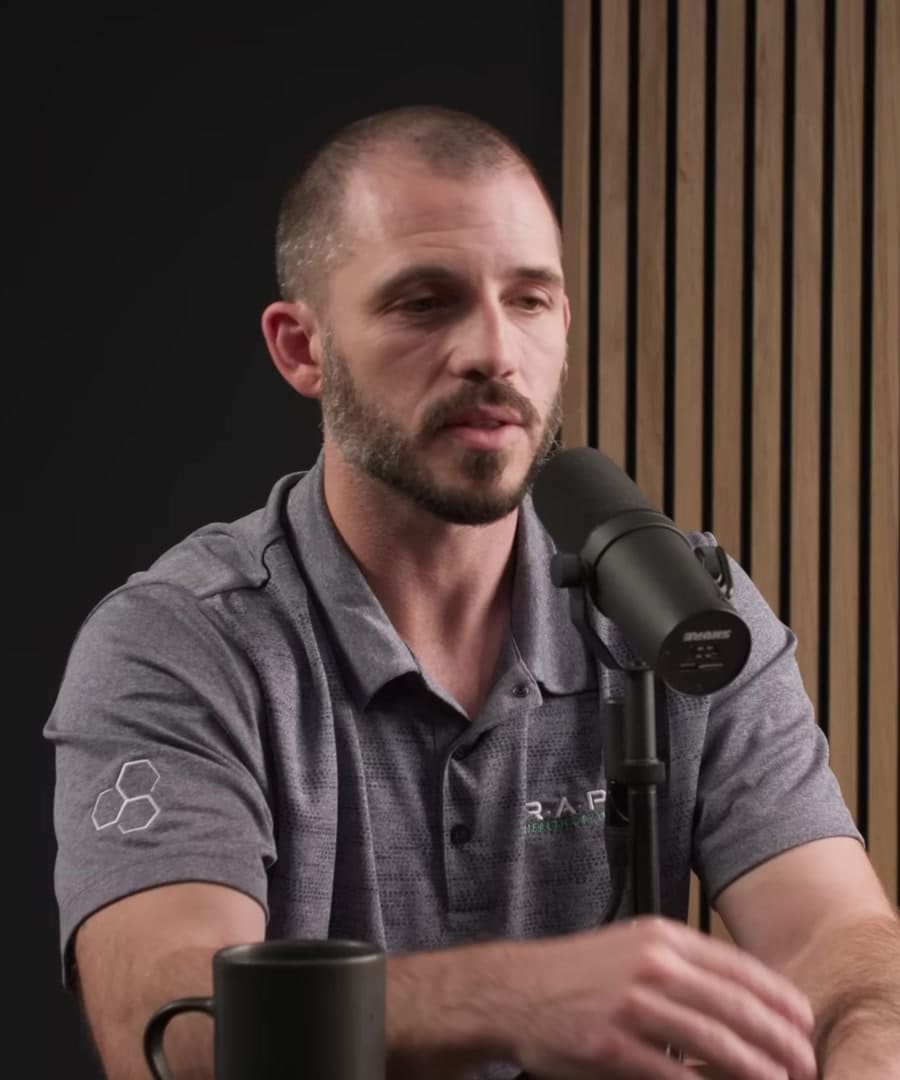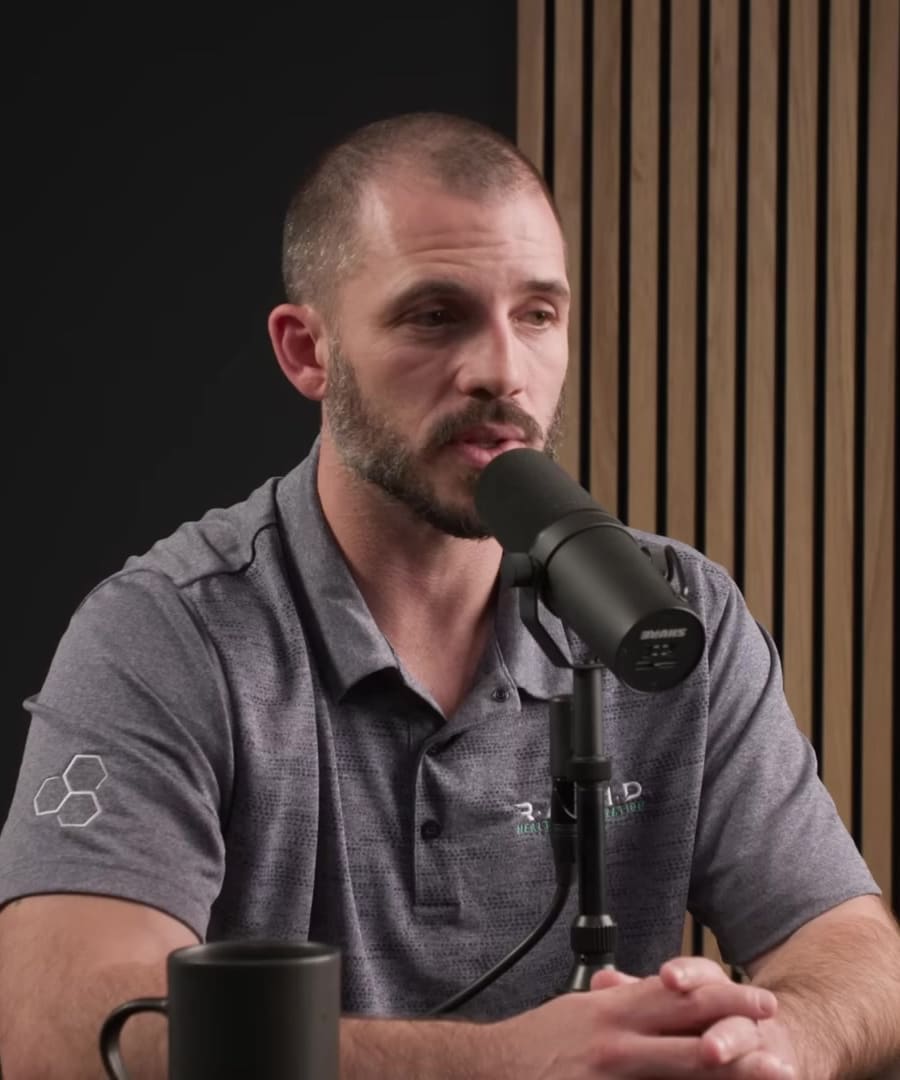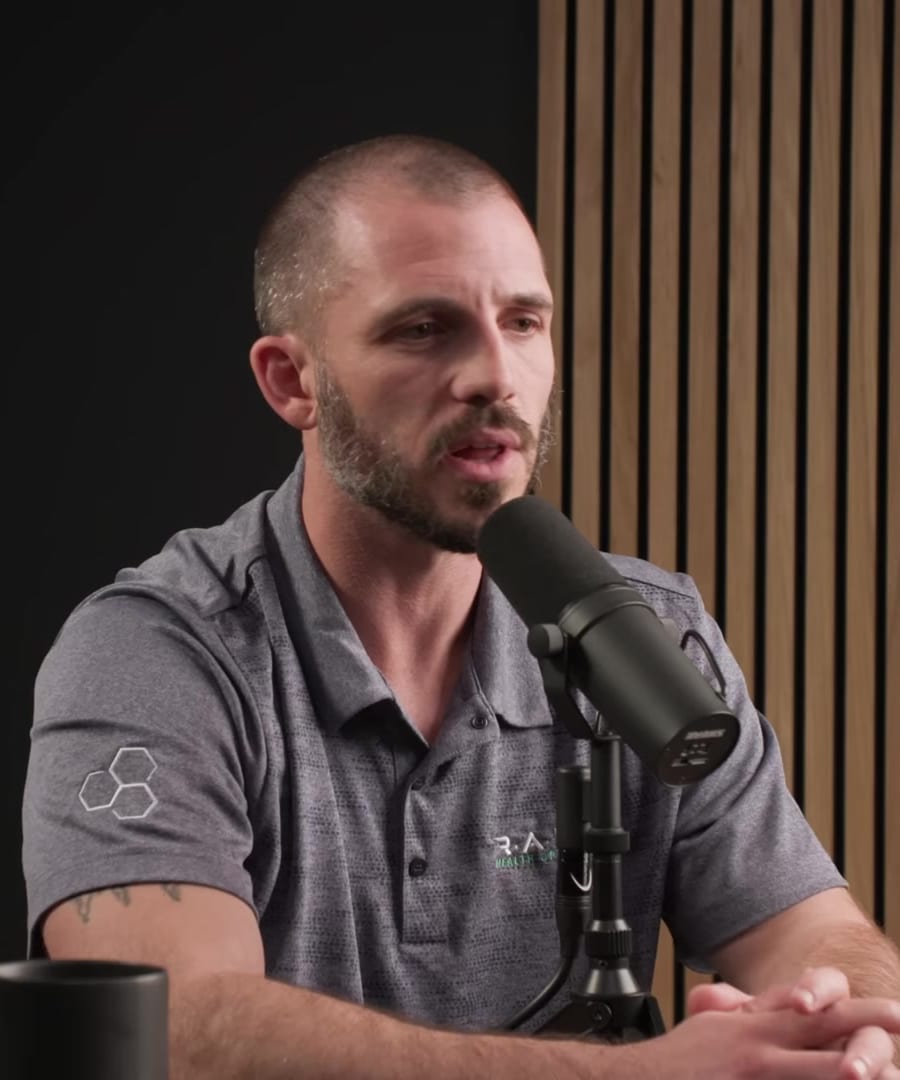what protocols are recommended for the night before a sports tournament
It appears that there is currently no direct data from the regarding protocols specifically for the night before a sports tournament. However, for general athletic performance and preparation, often emphasizes the importance of sleep quality, nutrition, hydration, stress management, and visualization techniques for optimal performance. If such protocols are discussed in future episodes, that information can be useful for tournament preparation. If you have any other requests or need information on related topics, feel free to ask.
RELATED QUESTIONSWhat nutrition advice is there for sports competition preparation?
Sources:
For sports competition preparation, nutrition plays a crucial role. Based on discussions from the , here are some key points regarding nutrition for enhancing exercise performance:
-
Electrolytes: emphasizes the importance of maintaining a good electrolyte balance. A recommendation is a roughly three to one sodium to potassium ratio. Electrolyte intake should be customized depending on the activity's duration and intensity as well as individual sweat characteristics 1.
-
Carbohydrates: Incorporating carbohydrates during exercise can be beneficial, especially if the activity is long-duration (more than 2 hours) or extremely high intensity. Around 60 to 100 grams of carbohydrates per hour is suggested, which could be ingested in 15 to 20-minute intervals during exercise. The aim is to maintain glucose levels and thereby enhance performance 1.
-
Recovery and Hydration: Starting the recovery process immediately after exercise is important, and hydration strategies should be tailored to the athlete's body weight and the conditions they're exercising in. Andy Galpin suggests consuming half your body weight in ounces of water across the entire day as a baseline, and a specific amount every 15 to 20 minutes during workouts, with adjustments based on body weight 2.
-
Metabolic Efficiency and Diet: advises against a completely ketogenic diet for high-performance athletes in high-intensity intermittent sports, as carbohydrates are typically required for energy during high-intensity efforts. The dietary approach should consider the characteristics and demands of the sport 3.
Remember, these are guidelines and recommendations which may vary based on the individual athlete's needs, the sport, personal preferences, and other factors. It's always a good practice to consult with a nutritionist or dietitian to tailor nutrition plans for specific athletic goals and requirements.
RELATED QUESTIONS-
Tell me more about electrolyte balance for athletes.
Sources:
Electrolyte balance is fundamental for athletes, affecting both mental and physical performance. Here are more detailed insights based on episodes from the :
-
Understanding Electrolytes: Neurons use electrolytes, specifically sodium and potassium, to generate action potentials necessary for muscle contractions and brain functions. During exercise, athletes can lose significant amounts of water—ranging from one to five pounds per hour—varying depending on the weather and intensity of the activity. This can result in a substantial reduction in work capacity and cognitive abilities, highlighting the importance of maintaining proper hydration and electrolyte balance 1.
-
Pre-Hydrate and Monitor: advises athletes to pre-hydrate if they know they are going to participate in a long or intense training session, especially in a hotter climate. He suggests consuming half a pound per body weight of ounces to start off hydration properly. The volume of water intake prior to exercise should be around 13 to 20 ounces in the hour preceding training. Andy also mentions a useful WT (weight, urine, thirst) system to help athletes gauge their hydration status independently of more complex measurements 2.
-
Intraworkout Hydration: During exercise, it is recommended to consume fluids that have a similar osmolality to your blood, matching the concentration of what you lose in sweat. This typically includes consuming electrolyte mixtures with 200 to 400 milligrams of sodium and a sodium-to-potassium ratio of about 2 or 3 to 1. This will help in replenishing the sodium and potassium lost through sweating 2.
-
Myths Debunked: and discuss common myths such as alkaline water altering body pH levels significantly. They emphasize that the pH of tissues in the body is tightly controlled for survival, and the focus should be on optimizing other aspects of nutrition and hydration before concerning oneself with the pH of drinking water 3.
Maintaining proper hydration and electrolyte balance is essential for optimizing both mental and athletic performance in athletes. It's not just about drinking enough water but also ensuring that the water contains the necessary electrolytes lost during intense physical activity.
RELATED QUESTIONS-
How should I intake carbohydrates during exercise?
Sources:
During exercise, especially for longer durations or high-intensity sessions, carbohydrate intake plays a crucial role in maintaining performance and preventing muscle glycogen depletion. Here are some guidelines based on the :
-
Timing: Carbohydrate intake is important before, during, and after workouts, especially if you anticipate muscle glycogen depletion 1. If you are going to have a workout with high energy expenditure and potential muscle glycogen depletion, it's recommended to consume carbohydrates either before the session or during the session.
-
Quantity: A general rule of thumb suggested is to consume approximately half a gram of carbohydrate per pound of body weight if you are engaging in high energy expenditure workouts. For example, if you weigh 200 pounds, ensure you ingest around 100 grams of carbohydrates, either before, during, or after the workout total 1.
-
Type of Carbohydrates: During the workout, focus on glucose and fructose, mostly glucose, in at least a two or three to one ratio of glucose to fructose. These types of carbohydrates are absorbed using separate transporters, which allows for maximizing carbohydrate intake during the session 2.
-
Concentration: The concentration of glucose in your fluid during exercise should generally be around 5% to 9%, which matches the concentration in most sports drinks 3.
-
Practicing: It's crucial to practice your race nutrition during training to avoid any stomach issues during the actual event 4.
-
Post-exercise: Ingesting carbohydrates after exercise can help attenuate exercise-induced inflammation. For instance, consuming complex carbohydrates and fruits post-exercise has been shown to reduce markers of inflammation significantly 5.
Remember that these recommendations can vary based on individual needs, the type of sport, the intensity of the exercise, and overall nutrition plans. It’s essential to try different strategies during training to see what works best for your body and to be mindful of proper hydration and electrolyte intake. Always consult a professional, such as a sports nutritionist, for personalized advice.
RELATED QUESTIONS-
What are some examples of good carb-rich foods for exercise?
Sources:
For carbohydrate-rich foods suitable for exercise, suggests focusing on complex carbohydrates and fruits as post-exercise nutrition. Some examples mentioned include rice, oatmeal, pasta, and fruit 1. These foods can help reduce exercise-induced inflammation and are a good source for replenishing muscle glycogen after a workout.
It's important to consume these carbohydrates within about 45 minutes to an hour post-exercise, especially if you have been exercising in a fasted state or for an extended period 1. Additionally, for carbohydrate intake during exercise, it might be useful to focus on glucose and fructose, mostly glucose, in a two or three to one ratio, as these are absorbed using separate transporters, which can maximize carbohydrate intake 2. Remember, before making dietary changes, consult with a healthcare professional or a registered dietitian to ensure they align with your personal health and fitness goals.
RELATED QUESTIONStell me about visualization techniques for optimal performance
Sources:
speaks about the importance of mental visualization in improving performance and learning. His key advice when it comes to practicing mental visualization techniques involves two main principles:
-
Keep Visualizations Brief and Sparse - You should keep your visualizations on the order of about 15 to 20 seconds and they should be relatively sparse, meaning not including a lot of elaborate visualization. This approach helps ensure the visualizations can be completed and repeated with a high degree of accuracy 1.
-
Mental Visualization Matches Real-World Processing Speed - When we imagine something, our brain processes it at the same speed as it would if that event were happening in reality. This shows that neural activity during visualization replicates real-world experiences 2.
Ultimately, while mental visualization captures the same patterns of neural firing as real-world behavior, combining actual practice with mental training is the most effective method for learning and enhancing cognitive and physical skills 2.
RELATED QUESTIONS-
Could you provide more tips on using visualization for performance?
Sources:
Here's more guidance on using visualization for optimal performance from , which supplements the principles already discussed:
-
Quality of Sleep - The quality of sleep has a significant impact on your ability to perform. A good night's sleep can result in being alert, calm, and confident, whereas a poor sleep can lead to a state of anxiety and a lesser performance 1.
-
Combining Real and Mental Practice - While mental visualization recreates the same neural firing patterns as actual behavior, combining real physical practice with mental visualization practices is key to mastering new skills and improving performance. This combined approach is more effective than either method alone 2.
For devising your visualization techniques, it is therefore important to:
- Ensure you get quality sleep the night before an important performance or learning task
- Use mental visualization techniques that are brief and simple to allow for easy repetition
- Combine mental practices with actual physical practice to maximize learning and performance
Remember, the actual process of mental visualization should closely mirror the real-world processing speed, and this approach can help to enhance your overall performance in various tasks.
RELATED QUESTIONS-
what protocols are recommended for the night before a sports tournament
- RELATED QUESTIONS
What nutrition advice is there for sports competition preparation?
- RELATED QUESTIONS
Tell me more about electrolyte balance for athletes.
- RELATED QUESTIONS
How should I intake carbohydrates during exercise?
- RELATED QUESTIONS
What are some examples of good carb-rich foods for exercise?
- RELATED QUESTIONS
tell me about visualization techniques for optimal performance
- RELATED QUESTIONS
Could you provide more tips on using visualization for performance?
- RELATED QUESTIONS












